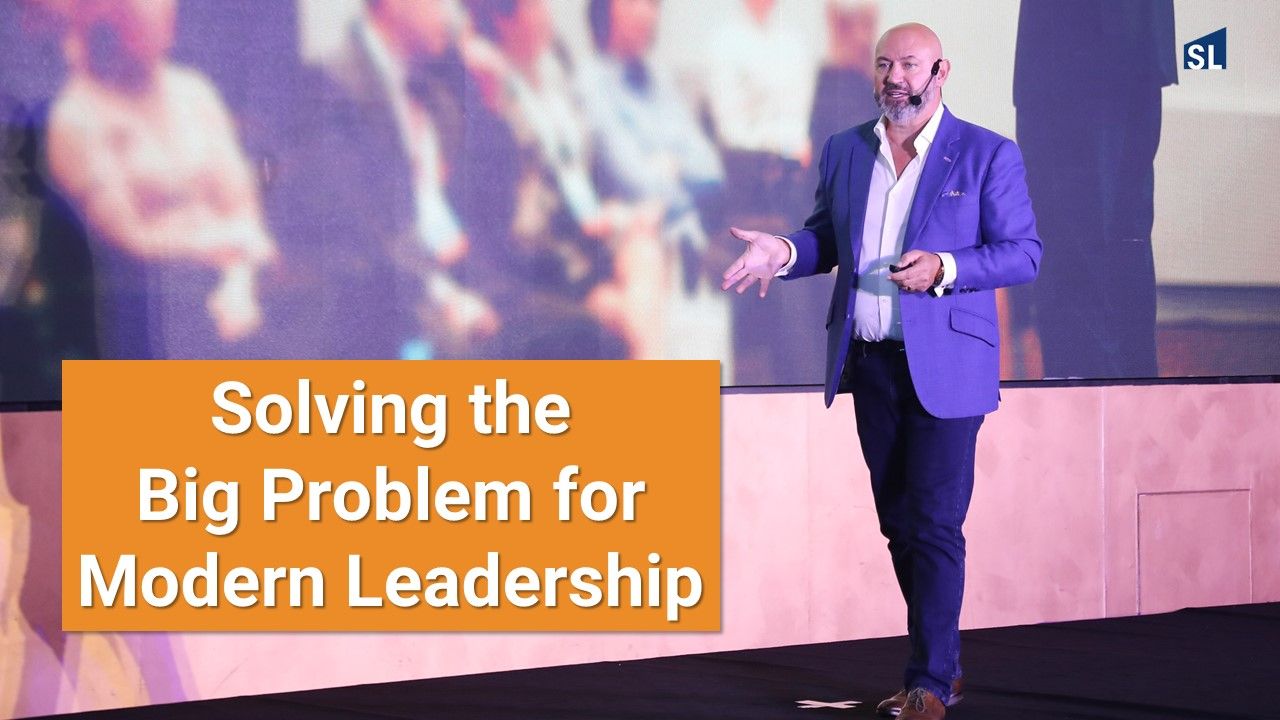Solving the Big Problem for Modern Leadership
Oct 27, 2023
It can be argued that traditional hierarchical management structures are failing to deliver in terms of employee engagement, retention, creativity, and productivity. In the current environment, self-leadership emerges as a beacon for modern leaders and managers. But what is the big problem and how does adopting a self-leadership approach solve for this?
In the AI era and with the reality of the hybrid workplace, the traditional hierarchical management system is not just outdated; it's a ticking time bomb.
A top-down approach with decisions trickling down, with little or no feedback or innovation from lower-level employees results in rigidity. In an AI-driven world, where rapid adaptation is key, this rigidity can be fatal.
The Big Problem is Trust
In Self Leadership: How to Become a More Success, Efficient, and Effective Leaders from the Inside Out (McGraw-Hill 2012) "Self-leadership is defined as:
"The practice of intentionally influencing your thinking, feeling, and actions towards your objectives"
Trust is the cornerstone of this practice. When leaders exhibit self-leadership, they inherently trust themselves, which cascades down to their teams. This trust fosters an environment of autonomy where individuals feel empowered to make decisions without constantly seeking approval.
A self-leadership culture promotes the practice of ownership. When individuals own their roles, they take responsibility for their actions and are accountable for the outcomes. This shift from a blame culture to one of ownership and accountability can drastically improve organizational performance.
Leaders and employees who practice self-leadership are more adaptable to change and can pivot when required. Moreover, they exhibit resilience, bouncing back from setbacks, and using them as learning opportunities.
The Problem with Trust
The concept of trust is multifaceted and has been studied extensively in various disciplines, including psychology, sociology, and business. I won't do a deep dive into the algorithm of trust in this article other than to say, that trust has many benefits but organizations are often structured with rules and regulations that clearly scream:
"We don't trust you"
Of course, there are 'bad actors', and an organization must protect itself, but take a step back and look at the rules and red tape that have been put in place to control the 1%. Now, consider the impact of these rules on the 99% who, with self-leadership, would self-regulate, and be more creative, agile, collaborative, engaged, resilient, less stressed, and more likely to stay at the company.
The Self-leadership Conversation
The problem with most leadership models is that they focus on the traits of the leader but leadership only occurs when.
"The follower changes their behaviors toward a vision or objective"
Effective leadership cannot be measured without looking at the dynamic between the leader and the follower(s).
In a modern workplace, this change is most likely to occur when leaders engage in dialogue with their employees. It is therefore disheartening to learn that only 8% of leaders are regularly dialoguing on digital platforms.
I wrote The New Leadership Playbook: Being Human Whilst Successfully Delivering Accelerated Results to address this problem by providing examples of the twelve key conversations that leaders need to master.
Do you prefer to be asked rather than told?
YES / NO
Conclusion
The big problem that self-leadership solves is the inefficiency and limitations of traditional hierarchical management structures. By emphasizing trust, autonomy, and empowerment, self-leadership addresses the challenges of modern workplaces, especially in the era of AI and hybrid working models. It fosters an environment where individuals take ownership, responsibility, and accountability for their actions, promoting agility, resilience, and peak performance. In essence, self-leadership equips leaders and managers to navigate the complexities of today's dynamic work environment, shifting from top-down directives to collaborative, innovative, and growth-oriented approaches.
I have been giving keynote speeches around the world on this topic and working to transform executive leadership teams to transform how they role model a self-leadership culture. Feel free to reach out to me to discuss your requirements.
Get a FREE Chapter of The New Leadership Playbook
Stay connected with news and updates!
Join our mailing list to receive the latest news and updates from our team.
Don't worry, your information will not be shared.
We hate SPAM. We will never sell your information, for any reason.

